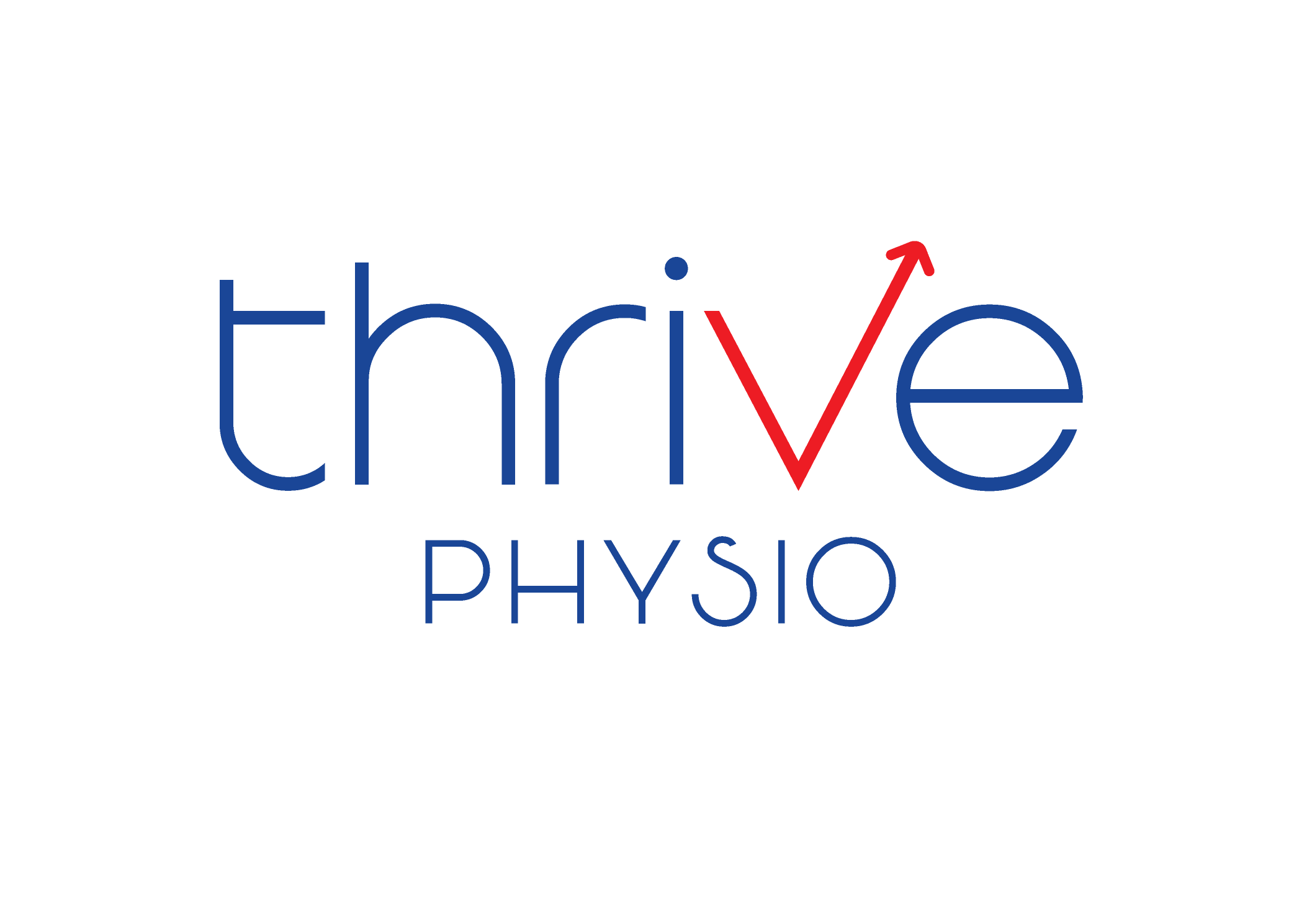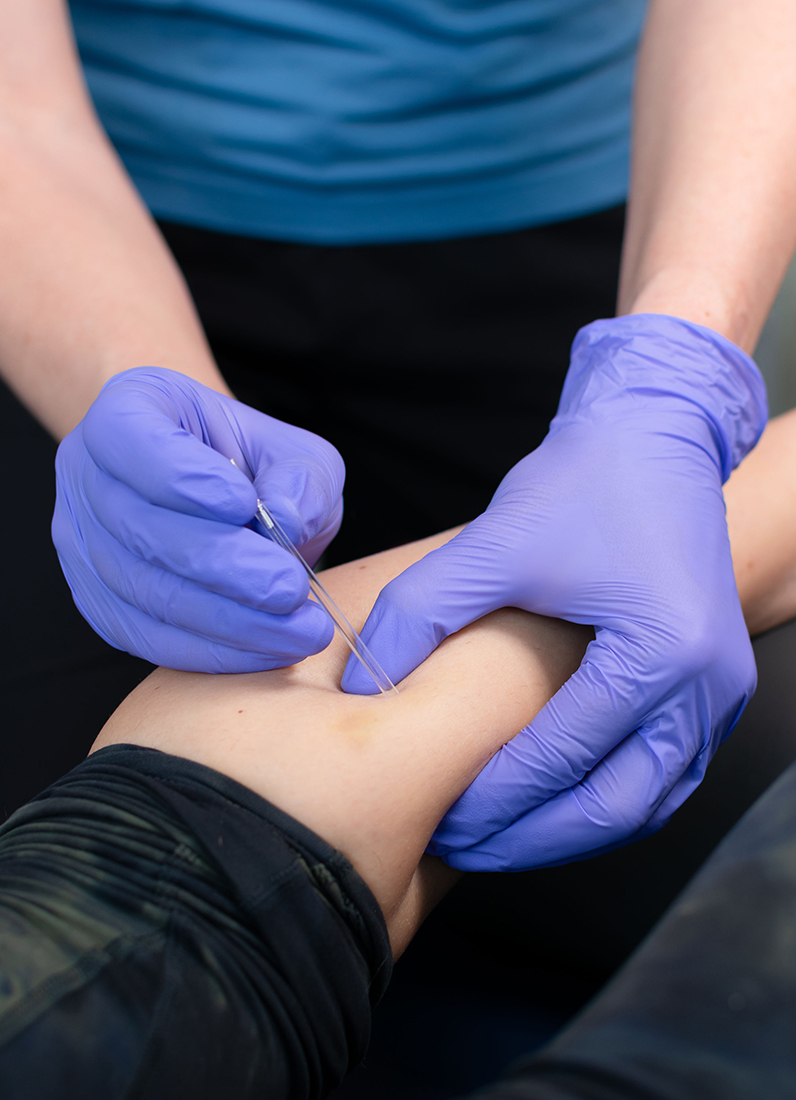You may have heard of dry needling and have wondered how it works. Or maybe you’ve never heard of it before and the name immediately intimidated you. You might be actively in pain and wondering if dry needling could help you get back to feeling like yourself. Hopefully this helps clear up some of those questions or hesitations.
What is dry needling?
By definition, dry needling is the insertion of a thin monofilament needle into muscle trigger points to help relieve tightness, decrease pain and reset the muscle. These muscle trigger points are tight bands of muscle that can cause limitations in range of motion and muscle activation. They not only cause local pain at the site of the trigger point or “knot,” but they can also refer pain to other areas of the body. This is always what makes diagnosis tricky! Pain is very good at letting us know there is a problem, but not as good at letting us know exactly where that problem is. It is called “dry” needling because there is no injection of any wet substance (medication) during the treatment.
In addition, your therapist may use electrical stimulation in tandem with dry needling. In this case, the needles act as electrodes to distribute the electric current over this body region. Research is beginning to show that use of the electrical stimulation provides added benefit over dry needling alone.
Why should I get dry needling?
The main reason I often recommend dry needling as a part of a client’s treatment plan is that it speeds up our timeline for healing and recovery. Dry needling can be used to reset a muscle quicker than most other manual tools like soft tissue work or joint mobilization. It acts as a “Control + Alt + Delete” by resetting the area of the body.
Who benefits from dry needling?
Anyone experiencing muscle-related pain. Or even those experiencing pain related to their joints. We know that muscles are the shock absorbers to offload our joints. If muscles are tight and guarded around a joint dysfunction, they will begin to compound the problem. Resetting the muscles around the joint can be a relevant treatment in this case as well.
Dry needling can be used to help treat many diagnoses. A list of common diagnoses that can be helped by dry needling:
- Headaches and neck pain
- TMJ dysfunction
- Rotator cuff dysfunction
- Tennis and golfer’s elbow
- Low back pain
- Hip bursitis
- Runner’s knee
- Achilles tendinopathy
- Plantar fasciitis
How does dry needling work?
There are three main proposed mechanisms by which dry needling helps relieve pain and improve function:
- Mechanical muscle trigger point release—this is the most studied and most talked about mechanism of needling. The needle is inserted into a muscle trigger point, which sends a reflex back to the spinal cord to create a “local twitch response.” You as the client can often feel this twitch like a mini cramp or mini contraction of the muscle. This is the best result of dry needling and helps to mechanically reset the trigger point or knot in the muscle, which allows the muscle to soften and relax.
- Improved blood flow—by inserting a needle into the skin, we are creating a micro-inflammatory response. Many of us cringe when we hear the word inflammation, but inflammation is the first step in the healing process. In fact, it is essential for us to heal! We can’t skip this step. By creating this very small inflammatory response, we bring blood flow to the area to re-start the body’s healing process. Especially for a chronic issue which the body has started to ignore, this increase in blood flow is a great way to bring renewed attention to healing the area.
- Nervous system reset—although we all like to think that our manual techniques have very tangible, mechanical reasons why they work, more and more research shows that the main system being affected is our nervous system. When we dry needle, we are introducing a novel and non-threatening stimulus to the nervous system. This input allows the painful part of the body to, in effect, calm down. Trigger points are known to cause allodynia (a non-painful stimulus like touch is perceived as painful) and hyperalgesia (an exaggerated pain response). Needling has been shown to reduce the nervous system’s sensitivity and increase the patient’s pain pressure threshold.
Where can someone be needled?
Anywhere your therapist is trained to safely administer dry needling. Dry needling is safe to be used on any part of the body, including hands, feet and muscles of the jaw. Physical therapists go to 50 hours of continuing education coursework in the state of Georgia, as well as complete a number of practice hours before they are certified to utilize the tool in the clinic.
And the most commonly asked question…
Does dry needling hurt?
Dry needling should not be excessively painful. I tell my clients it may be uncomfortable, strange, weird, unfamiliar…but it should not be painful. I always start the session by telling my clients they are in control and can maintain an open line of communication throughout the whole treatment session. “No pain no gain” does NOT need to be every physical therapist’s motto!
One final thought…
Although I use dry needling every day and find it to be an effective addition to my treatment toolbox, it is still just one modality. Dry needling gives us a window of opportunity for your body to move differently. If all we do is dry needle, that window will close and you will be back in my office next week for the same procedure. We need to use that window by actively retraining the muscles in order to get the results of dry needling to stick. Your home exercise program, desk set up at work, exercise regimen, warm up exercises all contribute to getting those short term effects to become long term relief.
If you think dry needling is for you, or have more questions about if it’s right for you, please reach out for a free 15 minute phone consultation with Dr. Elizabeth Dalrymple!
References:
Ana Mendigutia-Gómez, PT, PhD, Carolina Martín-Hernández, PT, Jaime Salom-Moreno, PT, PhD, César Fernández-de-las-Peñas, PT, PhD. Effect of Dry Needling on Spasticity, Shoulder Range of Motion, and Pressure Pain Sensitivity in Patients With Stroke: A Crossover Study.
Dommerholt, J. Dry-needling-peripheral and central considerations. Journal of manual and manipulative therapy. 2011;19(4), 223-238
Cummings, T.M. and White, A.R. Needle therapies in the management of myofascial trigger point pain: a systematic review. Archive of physical medicine and rehabilitation 2011; 82, 986-992.
Dunning J, Butts R, Henry N, Mourad F, Brannon A, Rodriguez H, Young I, Arias-Buria JL, Fernandez-de-las-Penas C. Electrical dry needling as an adjunct to exercise, manual therapy and ultrasound for plantar fasciitis: A multi-center randomized clinical trial. PLoS One. 2018 Oct 31; 13(10).



